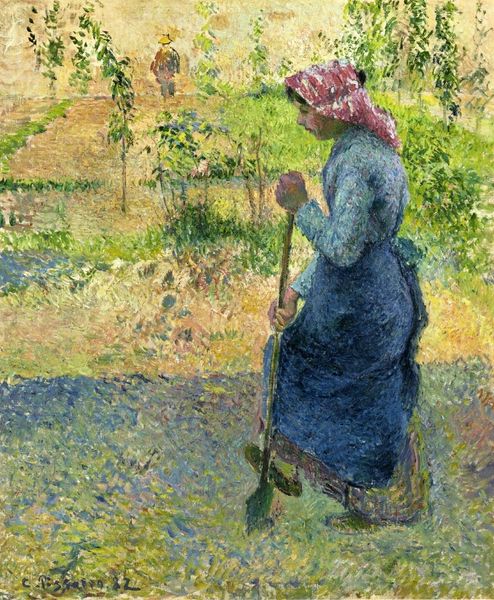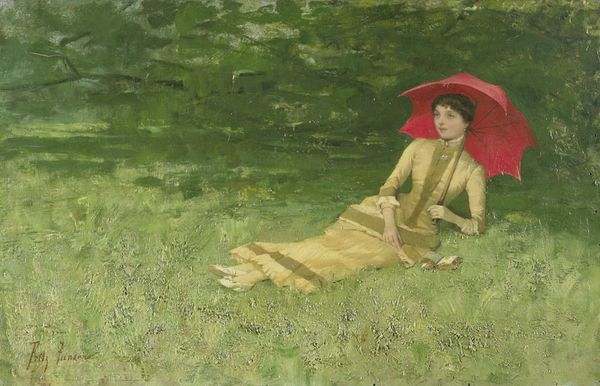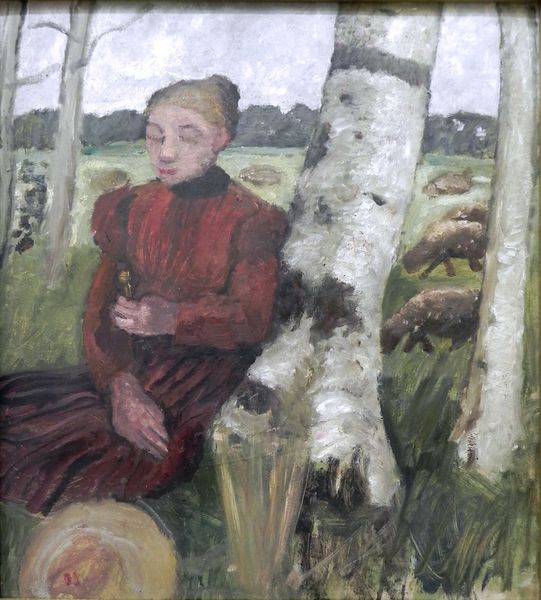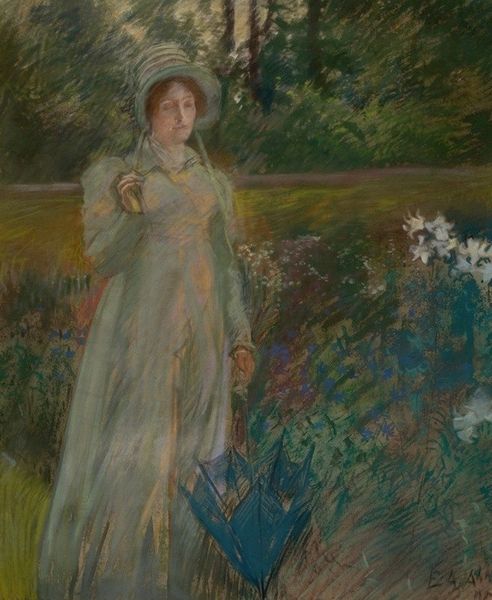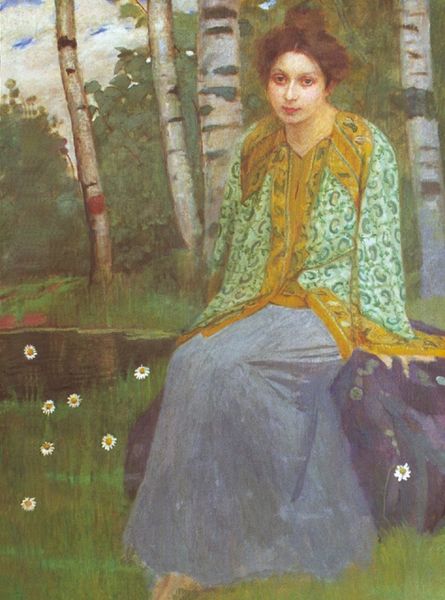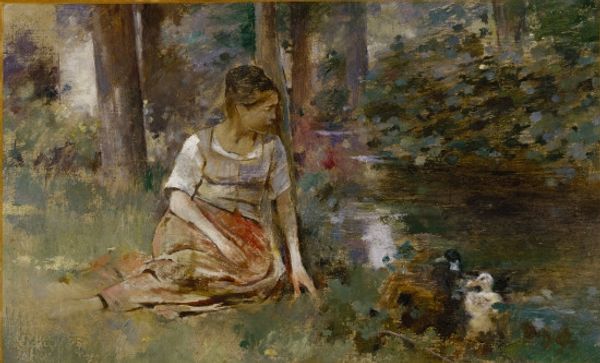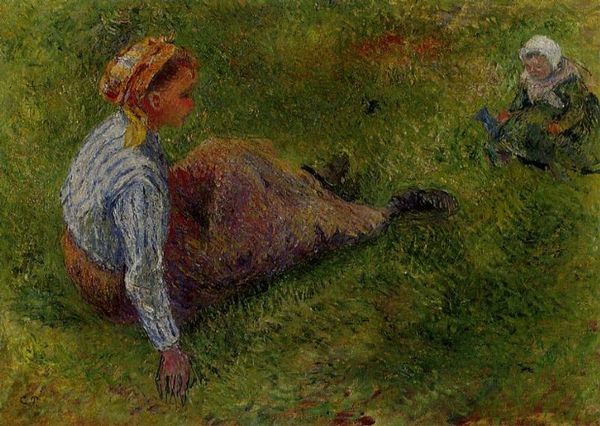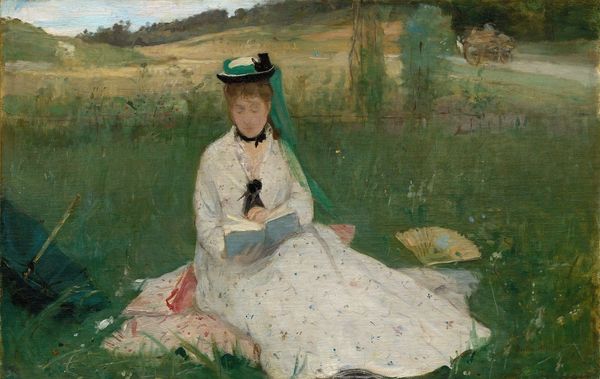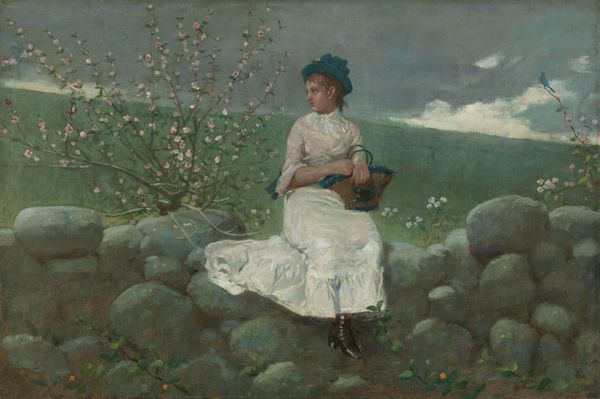
Copyright: Public Domain: Artvee
Curator: Looking at Richard Nicolaüs Roland Holst's oil painting, "Woman of Huizen sitting under a Tree," created sometime between 1888 and 1895, one is immediately struck by the simplicity of form and composition. Editor: I find myself drifting. It feels like a quiet, hazy afternoon dream. The colors are so muted and gentle, they wash over me like a soft rain. I want to be right there, under that tree, listening to the buzzing of bees. Curator: Indeed. Roland Holst was associated with Dutch symbolism and this painting offers insight into how these artists constructed representations of rural Dutch life through careful arrangement and selective representation. What does this scene omit? And for whom? The artist wasn't necessarily depicting the material conditions of labor and living in this specific time, instead he creates a bucolic and tranquil scene which seems almost dreamlike. Editor: I hadn’t considered that. It's true, isn't it? This feels deliberately idealized, maybe even sentimental. The woman seems at peace, but what’s conveniently left out of the frame? Still, I love how he captures the light filtering through the trees and her face is almost devoid of detail, as though the intention was never portraiture in its traditional form. Curator: It seems as though Roland Holst’s interest lays more in depicting a sense of place and atmosphere. This could be argued as an element of impressionism with its focus on fleeting moments. However, his muted palette gives a sense of ambiguity of both form and light that departs from typical impressionistic depictions. The artist might be leaning more towards symbolist aesthetic which emphasized more an emotional and psychological reaction rather than strict representation. Considering Huizen as a fishing village with its own distinctive identity in the Netherlands, this might be interpreted as a deliberate act by the artist. Editor: Yes, and I’m left thinking, what does this painting tell us about our desire to escape the chaos of modern life? Perhaps it's the quiet moments that hold the most resonance. Thanks for nudging me to consider what might lay outside of the frame. Curator: And you reminded me how important it is to tap into those sensory and personal reactions when we encounter art. Thank you.
Comments
No comments
Be the first to comment and join the conversation on the ultimate creative platform.

